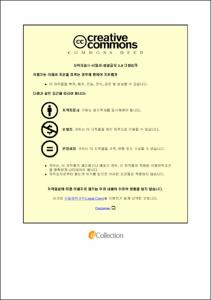유방암 환자 유래 이종이식 모델의 생착과 관련된 요인 연구
- Alternative Title
- Factors associated with engraftment success of patient-derived xenografts of breast cancer
- Abstract
- Background Patient derived xenograft (PDX) models serve as a valuable tool for the ‐ preclinical evaluation of novel therapies. They closely replicate the genetic, phenotypic, and histopathological characteristics of primary breast tumors. Despite their promise, the rate of successful PDX engraftment varies widely in the literature. This study aimed to identify the key factors associated with successful PDX engraftment of primary breast cancer and to provide a comprehensive literature review of factors influencing PDX engraftment success. Methods We integrated clinicopathological data with morphological attributes quantified using a trained artificial intelligence (AI) model to identify the principal factors affecting PDX engraftment. A comprehensive literature search was conducted using PubMed, Embase, and Web of Science databases to identify studies reporting PDX engraftment success rates and associated factors. Results Multivariate logistic regression analyses demonstrated that several factors, including a high Ki 67 labeling index (Ki 67LI) (p<0.001), younger age at diagnosis ‐ ‐ (p=0.032), post neoadjuvant chemotherapy (NAC) (p=0.006), higher histologic grade (p=0.039), larger tumor size (p=0.029), and AI assessed higher intratumoral necrosis‐ (p=0.027) and intratumoral invasive carcinoma (p=0.040) proportions, were significant factors for successful PDX engraftment (area under the curve [AUC] 0.905). In the NAC group, a higher Ki 67LI (p<0.001), lower Miller Payne grade (p<0.001), and reduced ‐ ‐ proportion of intratumoral normal breast glands as assessed by AI (p=0.06) collectively provided excellent prediction accuracy for successful PDX engraftment (AUC 0.89). The literature review revealed that the choice of mouse strain, implantation site and estrogen receptor (ER) status significantly influenced breast PDX engraftment success. Orthotopic implantation yielded higher success rates, including intraductal injection of breast carcinoma cells, and ER-negative tumors with a higher histologic grade showed higher engraftment rates. Conclusions We found that high Ki 67LI, younger age, post NAC status, higher histologic ‐ ‐ grade, larger tumor size, and specific morphological attributes were significant factors for predicting successful PDX engraftment of primary breast cancer. The literature review highlighted the complex interplay of factors influencing breast PDX engraftment success across different factors including implantation site, hormonal status, histologic grade, and underscored the need for careful consideration of these variables in the design and interpretation of PDX studies. Keywords: Breast cancer, Patient derived xenograft, Engraftment, Deep learning, Artificial ‐ intelligence, Morphometrics, Neoadjuvant chemotherapy, Young age, Triple negative breast cancer‐
- Issued Date
- 2024
- Awarded Date
- 2024-08
- Type
- Dissertation
- Alternative Author(s)
- Jongwon Lee
- Affiliation
- 울산대학교
- Department
- 일반대학원 의학과
- Advisor
- 이희진
- Degree
- Doctor
- Publisher
- 울산대학교 일반대학원 의학과
- Language
- kor
- Rights
- 울산대학교 논문은 저작권에 의해 보호받습니다.
- Appears in Collections:
- Medicine > 2. Theses (Ph.D)
- 파일 목록
-
-
Download
 200000808213.pdf
기타 데이터 / 11.01 MB / Adobe PDF
200000808213.pdf
기타 데이터 / 11.01 MB / Adobe PDF
-
Items in Repository are protected by copyright, with all rights reserved, unless otherwise indicated.